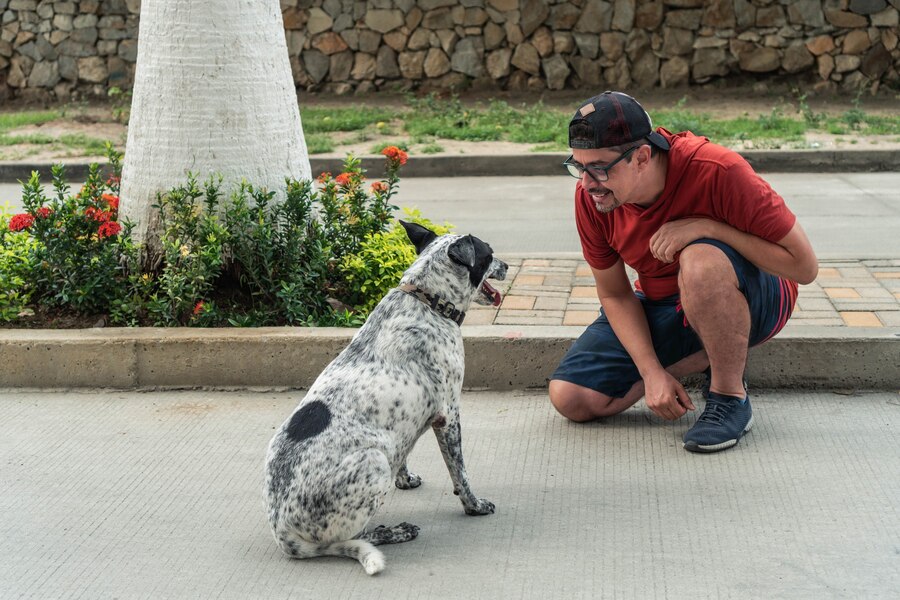Your dog might not want to go outside due to fear, anxiety, or discomfort. Health issues can also be a reason.
Dogs may refuse to go outside for several reasons. Fear of loud noises, unfamiliar environments, or past traumatic experiences can cause anxiety. Health problems like arthritis or injuries may make it painful for them to walk. Weather conditions, such as extreme heat or cold, can also deter them.
It’s essential to observe your dog and identify any signs of distress or discomfort. Consulting a veterinarian can help rule out medical issues. Gradually introducing your dog to the outdoors with positive reinforcement can make the experience more pleasant. Understanding and addressing the root cause will encourage your dog to enjoy outdoor activities.
Common Reasons For Fear
Dogs may fear going outside due to past traumatic experiences, unfamiliar environments, or loud noises. Anxiety can also stem from lack of socialization or negative associations with outdoor activities.
Lack Of Socialization
Dogs need to meet new people and other animals early. If a dog misses this, it may fear the outside world. New sounds and sights can scare a dog who stayed indoors. Gradual exposure can help a lot. Always reward brave steps with treats. A patient approach can make a huge difference.
Past Trauma
Bad experiences can make dogs afraid. Loud noises or a negative event can cause trauma. These memories can make them scared to go outside. Comfort your dog and make outside time fun. Use toys and treats to build positive associations. Slowly, your dog will feel more secure.
Understanding Canine Behavior
Dogs use body language to communicate feelings. Notice your dog’s tail position. A tucked tail can mean fear. Ears pinned back show nervousness. Watch for lip licking and yawning. These can be signs of stress. Pay attention to your dog’s eyes. Wide eyes with whites showing indicate worry. Your dog’s posture is also important. A crouched body means your dog feels scared.
Dogs can show anxiety in many ways. Trembling or shaking is a common sign. Whining or barking often indicates discomfort. Your dog may try to hide. Pacing back and forth is another clue. Some dogs may refuse treats. Others might have accidents indoors. Watch for excessive drooling or panting. These are also signs of stress.
Creating A Safe Environment
Dogs may refuse to go outside due to fear or past trauma. Gradual exposure and positive reinforcement can help. Ensure the outdoor environment feels safe and inviting for your pet.
Secure Outdoor Space
Your dog needs a safe and secure place outside. Fences help keep them safe. Make sure the yard is free from hazards. Remove sharp objects and dangerous plants. Ensure the gate is always closed. This prevents the dog from running away.
Comfort Items
Place favorite toys in the yard. This makes the dog feel safe. Add a comfy bed or blanket. These items smell like home. Water bowls should be available. Dogs get thirsty while playing. Consider adding a shaded area. This protects them from the sun.
Positive Reinforcement Techniques
Use treats to make your dog feel happy. Give a treat every time your dog steps outside. Keep treats small and tasty. Cheese, chicken, and dog biscuits work well. Your dog will start to love going outside.
Dogs love praise and affection. Say “good job” when your dog goes outside. Pet your dog and give hugs. Your dog will feel safe and loved. This makes going outside fun.
Gradual Exposure Methods
Start with short walks around the yard. Keep the first walk brief. Just a few minutes is enough. Use treats to encourage your dog. Speak in a happy voice to make it fun.
Increase the distance gradually. Each day, walk a bit further. Let your dog set the pace. Stop if your dog seems scared. Praise your dog for each step forward.
Professional Help
A veterinarian can help identify any medical issues. Health problems can make your dog avoid going outside. Schedule a vet visit to rule out pain or illness. The vet may check for injuries or arthritis. They might also look for skin conditions. Allergies can make dogs uncomfortable outdoors. The vet can prescribe treatments if needed. Behavioral issues can also be assessed. Some dogs might need anxiety medications.
Professional dog trainers can assist with behavioral problems. Trainers use positive reinforcement to encourage outdoor activities. They can teach dogs to overcome their fears. Trainers create a safe environment for learning. They work with dogs to build confidence. Training sessions are usually fun and engaging. Consistent training can make a big difference. Regular practice is key to success.
Using Calming Aids
Calming aids can help soothe your dog’s anxiety about going outside. These aids promote relaxation and reduce stress, making outdoor trips more pleasant.
Thundershirts
Thundershirts can help dogs feel safe. The gentle pressure mimics a comforting hug. Many dogs relax quickly with a Thundershirt. This can help them go outside without fear. It is easy to put on and take off. Always choose the right size for your dog. They should feel snug but not too tight.
Using a Thundershirt can make a big difference. Dogs may become more confident and happy. Regular use can build trust and comfort.
Aromatherapy
Aromatherapy can calm anxious dogs. Essential oils like lavender and chamomile are popular choices. These scents can create a peaceful environment. You can use a diffuser in your home. Dogs can also wear aromatherapy collars.
Always use dog-safe oils. Some oils can be harmful to pets. Consult with a vet before starting aromatherapy. This ensures the safety and well-being of your dog. Aromatherapy can help dogs feel more relaxed and willing to go outside.
Consistency And Patience
Establishing a daily routine helps your dog feel secure. Take your dog outside at the same times each day. Dogs thrive on predictability and knowing what to expect. Make sure to reward your dog with treats and praise for going outside.
Keep track of your dog’s progress. Note any changes in behavior. Use a journal or app to monitor improvements. This helps identify patterns and triggers. Celebrate small victories to keep motivated.
Another Post: Why Does Your Dog Bows to You
FAQ
Why Is My Dog Afraid To Go Outside?
Your dog might be scared due to unfamiliar noises, past trauma, or new environments. Gradual exposure helps build confidence.
How Can I Encourage My Dog To Go Outside?
Use treats, positive reinforcement, and gradual exposure. Make outdoor time fun and stress-free to encourage your dog.
Could Health Issues Prevent My Dog From Going Outside?
Yes, health issues like arthritis or injuries can make outdoor activity painful. Consult a vet for a thorough check-up.
Conclusion
Understanding why your dog won’t go outside is crucial. Address their fears, health, or training needs. Consult a vet or professional trainer for guidance. Patience and consistent training can help your dog enjoy the outdoors again. Your furry friend’s well-being should always come first.
Happy walks await!

